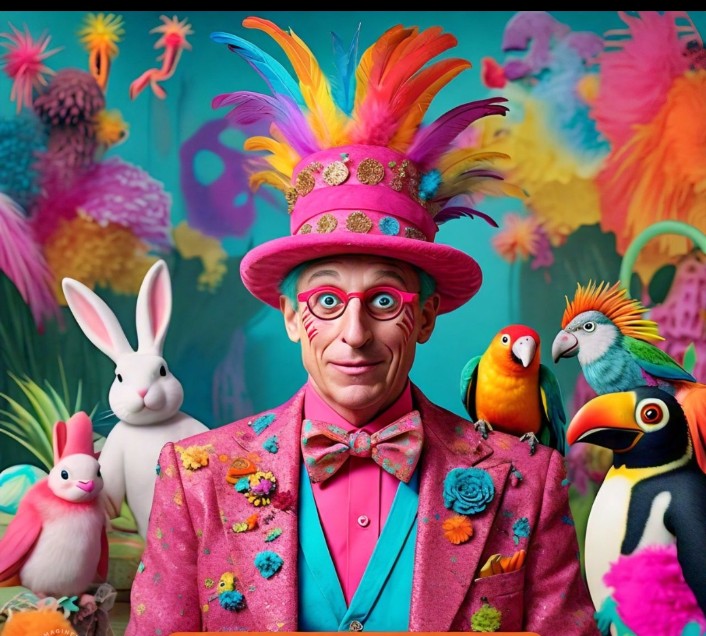Introduction
In the ever-evolving world of media and journalism, few phrases capture the imagination like “Totally Wackadoodle NYT.” This expression, often used to describe something that is outlandishly absurd or nonsensical, has recently found its way into discussions surrounding the New York Times (NYT). This article delves into the origins, usage, and implications of the phrase “totally wackadoodle” in relation to the NYT, offering insights into its impact on public perception and media discourse.
The Origins of “Totally Wackadoodle NYT”
Definition and Usage
“Totally Wackadoodle NYT” is an informal phrase combining “wackadoodle,” a slang term meaning eccentric or bizarre, with “totally,” which intensifies the meaning. The term “wackadoodle” itself is a playful variation of “wacko,” a term used to describe someone or something that is irrational or nonsensical. The addition of “totally” amplifies the sense of absurdity, creating a phrase that is both emphatic and expressive.
Historical Context
The term “wackadoodle” emerged in American vernacular in the late 20th century, often used to describe unconventional behavior or ideas. Its use in media and popular culture has grown, especially in contexts where exaggerated descriptions are employed for humorous or critical effect. The phrase gained traction on social media platforms, where users frequently combine it with current events to express disbelief or criticism.
“Totally Wackadoodle NYT” in Relation to the New York Times
Media Criticism and Public Perception
The New York Times, a prestigious and influential newspaper, often finds itself at the center of public scrutiny and debate. When critics use the term “Totally Wackadoodle NYT” in reference to the NYT, they typically do so to express frustration with the paper’s editorial choices or reporting style. This criticism can stem from perceived biases, sensationalism, or inaccuracies in the paper’s coverage.
Examples of Controversy
Several incidents have led to the use of “Totally Wackadoodle NYT” in discussions about the NYT. For instance, contentious political coverage or investigative pieces that deviate from traditional reporting standards might provoke such a response. Critics may argue that certain articles or viewpoints are excessively sensational or unbalanced, leading them to describe the coverage as “totally wackadoodle.”
The Impact of Totally Wackadoodle NYT Phrase on Media Discourse
Amplifying Criticism
The use of “Totally Wackadoodle NYT” in media discourse serves to amplify criticism by employing a vivid and memorable description. This phrase captures attention and underscores the critic’s disapproval in a way that more neutral language might not. By characterizing certain aspects of the NYT’s reporting as “wackadoodle,” critics emphasize their belief that the paper has deviated from objective or rational journalism.
Influence on Public Opinion
The phrase “Totally Wackadoodle NYT” can influence public opinion by framing the NYT’s reporting in a negative light. When widely used, it can contribute to a broader narrative of distrust or dissatisfaction with the media outlet. This impact is particularly significant in the digital age, where social media amplifies and disseminates opinions rapidly.
The Role of Totally Wackadoodle NYT Satire and Humor
Satirical Commentary
In addition to criticism, “Totally Wackadoodle NYT” is often employed in satirical commentary about the NYT. Satirists and comedians use the phrase to mock or parody the newspaper’s content, drawing attention to perceived absurdities or inconsistencies. This humorous approach can offer a critique that resonates with audiences by blending entertainment with commentary.
Public Engagement on Totally Wackadoodle NYT
The use of satire and humor involving “Totally Wackadoodle NYT” can engage the public in discussions about media practices. By highlighting perceived flaws in a comedic manner, satirists encourage audiences to question and analyze the content they consume. This engagement can lead to a more informed and critical media landscape.
Conclusion
The phrase “Totally Wackadoodle NYT” has carved out a unique space in discussions about the New York Times, reflecting broader themes of media criticism and public perception. Whether used to express genuine discontent or to engage in satirical commentary, the phrase captures the intensity of reactions to the newspaper’s reporting. As media continues to evolve, phrases like “totally wackadoodle” offer a lens through which to examine the interplay between journalism and public opinion, highlighting the dynamic nature of media discourse in the modern age.

